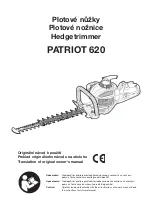
Getting Started
3-3
WMX SERIES DIMMER
OPERATING
MANUAL
If all is well, power down and connect loads.
3.4 Connecting
loads
The standard output connectors are twelve 10 amp Australian sockets (Export models
may differ from these configurations). Ensure any plugs are pushed firmly into their
sockets and/or all screw terminals are tight.
The WMX will drive most incandescent loads as well as some downlight transformers
(suitable for leading edge dimmer control), fans, and dimmable fluorescent tubes. The
load should be greater than the specified minimum (refer to section
8.0 Technical Data
and Specifications
).
3.5
Connecting DMX-512 input
The input signal to the dimmer should conform to the AMERICAN NATIONAL
STANDARD (ANSI) E1.11-2004 ENTERTAINMENT TECHNOLOGY USITT DMX-
512-A specification. Plug the DMX signal to the “DMX IN” socket. The DMX signal
may be daisy-chained to the next dimmer via the LOOP connector.
When power is on the DMX LED indicates the presence of DMX signals.
The DMX receiver input is protected against extreme over-voltages across any input
pins and from any input to chassis. The “terminating” resistor is not protected against
over-voltages.
3.6 DMX
termination
In any DMX-512 system the signal should be terminated at the last dimmer or receiver
in the chain, and the WMX can provide this function. To terminate the DMX signal, set
the front panel slide switch from LOOP to the Terminate position. Note that in this
position no signal is present at the LOOP connector.
3.7 Power-up
sequence
When powering up lighting systems, the following sequence should be used:
1. First the control desk;
2. Then any softpatches and/or DMX receivers;
3. Finally the dimmers, preferably one at a time starting from the first dimmer rack in
the DMX loop.
This procedure minimises the risk of producing the lighting equivalent of an audio
“thump” and prevents damage to lamps, dimmers, and other controlled devices.
Use the reverse procedure when powering down.
Summary of Contents for WMX
Page 1: ...WMX...











































